
Augustus Welby Northmore Pugin was an English architect, designer, artist and critic with French and Swiss origins. He is principally remembered for his pioneering role in the Gothic Revival style of architecture. His work culminated in designing the interior of the Palace of Westminster in Westminster, London, and its renowned clock tower, the Elizabeth Tower, which houses the bell known as Big Ben. Pugin designed many churches in England, and some in Ireland and Australia. He was the son of Auguste Pugin, and the father of Edward Welby Pugin, Cuthbert Welby Pugin, and Peter Paul Pugin, who continued his architectural and interior design firm as Pugin & Pugin.
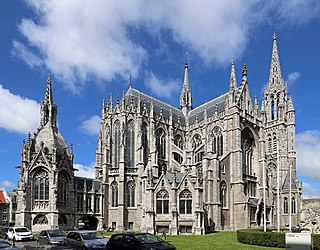
Gothic Revival is an architectural movement that after a gradual build-up beginning in the second half of the 17th century became a widespread movement in the first half of the 19th century, mostly in England. Increasingly serious and learned admirers sought to revive medieval Gothic architecture, intending to complement or even supersede the neoclassical styles prevalent at the time. Gothic Revival draws upon features of medieval examples, including decorative patterns, finials, lancet windows, and hood moulds. By the middle of the 19th century, Gothic Revival had become the pre-eminent architectural style in the Western world, only to begin to fall out of fashion in the 1880s and early 1890s.
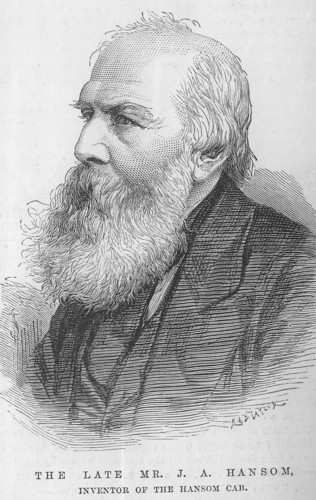
Joseph Aloysius Hansom was a British architect working principally in the Gothic Revival style. He invented the Hansom cab and founded the eminent architectural journal The Builder in 1843.

Ushaw College is a former Catholic seminary, which until 2011 was also a licensed hall of residence of Durham University near the village of Ushaw Moor, County Durham, England, which is now a heritage and cultural tourist attraction. The college is known for its Georgian and Victorian Gothic architecture and listed nineteenth-century chapels. The college now hosts a programme of art exhibitions, music and theatre events, alongside tearooms and a café.

Downside Abbey is a Benedictine monastery in England and the senior community of the English Benedictine Congregation. Until 2019, the community had close links with Downside School, for the education of children aged 11 to 18. Both the abbey and the school are at Stratton-on-the-Fosse, between Westfield and Shepton Mallet in Somerset, South West England. In 2020, the monastic community of Downside Abbey was home to fifteen monks. In 2022, the community moved to Devon.
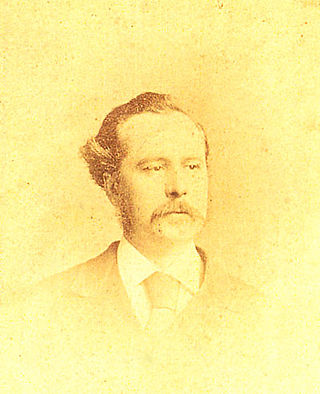
Edward Welby Pugin was an English architect, the eldest son of architect Augustus Welby Northmore Pugin and Louisa Barton. His father was an architect in the Gothic Revival style, and after his early death in 1852 Edward continued his practice. At the time of his own early death in 1875, Pugin had designed and completed more than one hundred Catholic churches. His brothers Cuthbert and Peter continued the practice as Pugin & Pugin.
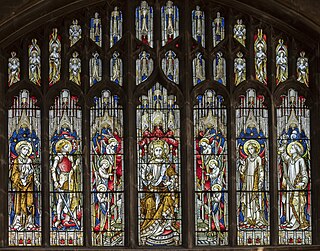
Hardman & Co., otherwise John Hardman Trading Co., Ltd., founded 1838, began manufacturing stained glass in 1844 and became one of the world's leading manufacturers of stained glass and ecclesiastical fittings. After the doors closed at Lightwoods Park Justin Hardman, a descendant of John Hardman kept the heart of the studio alive and with the help of chief designer, Artist Edgar JB Phillips they continue to design and manufacture exquisite traditional Hardman stained glass around the world.

Stanbrook Abbey is a Catholic contemplative Benedictine Monastery with the status of an abbey, located at Wass, North Yorkshire, England.

St. John the Evangelist Roman Catholic Church is located on the South Parade in the south-east section of Bath City Centre – the old Ham District where John Wood the Elder, the Georgian architect, had originally planned his gigantic "Forum".
Charles Francis Hansom was a prominent Roman Catholic Victorian architect who primarily designed in the Gothic Revival style.

Jean-Baptiste Bethune was a Belgian architect, artisan and designer who played a pivotal role in the Belgian and Catholic Gothic Revival movement. He was called by some the "Pugin of Belgium", with reference to the influence on Bethune of the English Gothic Revival architect and designer, Augustus Pugin.
Thomas Walsh was an English Catholic prelate who served as Vicar Apostolic of the London District from 1848 until his death.

Dissenting Gothic is an architectural style associated with English Dissenters - Protestants not affiliated with the Church of England. It is a distinctive style in its own right within Gothic Revival architecture that emerged primarily in Britain, its colonies and North America, during the 19th century.

Archibald Matthias Dunn FRIBA, JP, was a British architect. He was, along with his partner Edward Joseph Hansom, among the foremost Catholic architects in North East England during the Victorian era.

Abbotskerswell Priory, on the outskirts of the village of Abbotskerswell, near Newton Abbot, Devon, England, was the home of a community of Augustinian nuns from 1861 until 1983. It has now been converted into apartments for retirees.
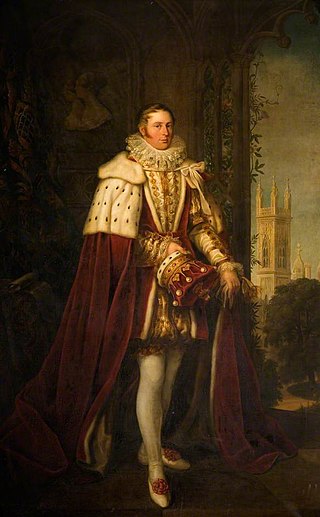
John Talbot, 16th Earl of Shrewsbury, 16th Earl of Waterford was a British peer and aristocrat. Sometimes known as "Good Earl John", he has been described as "the most prominent British Catholic of his day", although he was the last Earl of Shrewsbury to follow the Catholic faith. John was also Lord High Steward of Ireland, an office the Earls of Shrewsbury have held since 1446.
Charles Norris OSB (1909–2004) was a Benedictine monk and dalle de verre stained glass artist who created works for Roman Catholic churches in the UK.

St Thomas of Canterbury Church, also known as St Thomas's, Rylston Road, is a Roman Catholic parish church in Fulham, central London. Designed in the Gothic Revival style by Augustus Pugin in 1847, the building is Grade II* listed with Historic England. It stands at 60 Rylston Road, Fulham, next to Pugin's Grade II listed presbytery, the churchyard, and St Thomas's primary school, also largely by Pugin, close to the junction with Lillie Road in the borough of Hammersmith and Fulham.

St Mary's Church or Our Lady of Reparation Church is a Catholic Parish church in Croydon. It was built from 1863 to 1864 and designed by E. W. Pugin and Frederick Walters. It is architecturally in the Gothic Revival style. It is situated to the north of the centre of Croydon on the junction of Wellesley Road and Station Road, next to St Mary's Roman Catholic High School, Croydon, but its parish extends to the west of the town.

Our Lady and St Alphonsus Church or Our Blessed Lady and St Alphonsus Church is a Catholic parish church in Blackmore Park, near Hanley Swan, Malvern Hills District, Worcestershire, England. It was built from 1844 to 1846, before the reestablishment of the Catholic dioceses. It was designed by Charles Hansom, with furnishings designed by Augustus Pugin, in the Gothic Revival style. It is located on Hanley Swan road to the north of Hanley Swan. It is a Grade II* listed building.
















